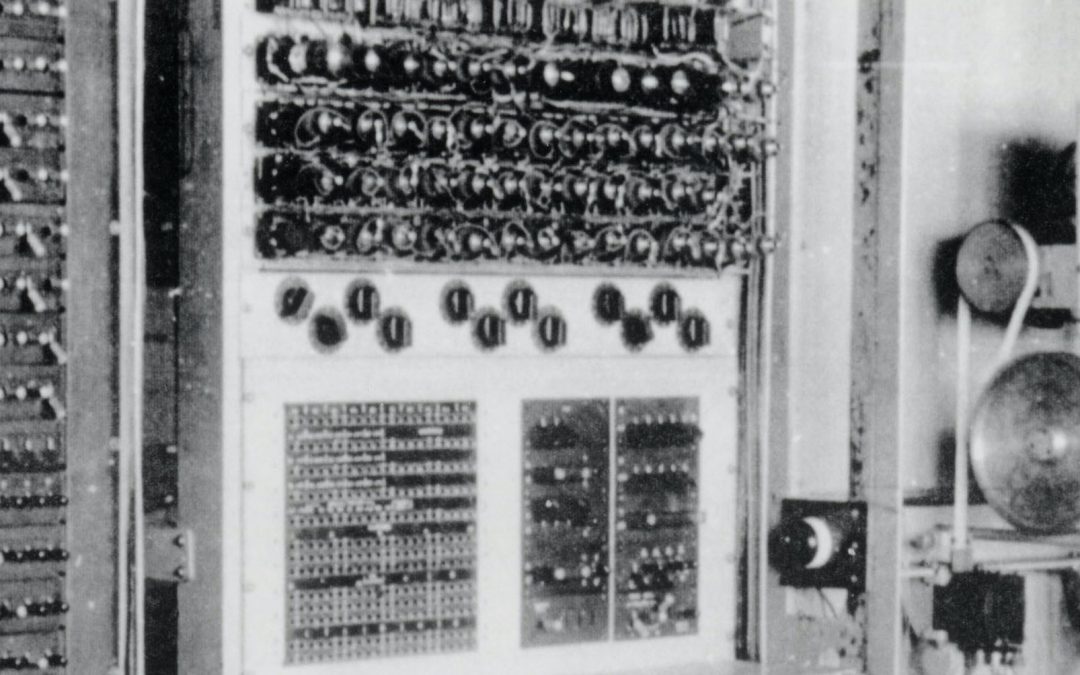—Research to win the war: armed conflict as a stimulus for the development of science and technology.—
Since the origins of humankind, war has been one of the main stimuli for the development of science and technology. There is evidence of technological innovations whose development was a response to military interests since ancient times. This is the case of the wheel, conceived in Mesopotamia around the year 4,000 BC and linked to the development of tanks. Certainly, the first wheeled vehicles were used on the battlefield, as shown on the Standard of Ur, a Sumerian work of art preserved in the British Museum in London that is the oldest existing representation of the wheel. We cannot, therefore, ignore the important mobilisation of economic and human resources that military interests have meant for scientific and technological activity, facilitating the emergence of spaces for research that go beyond traditional laboratories. Such is the case of battlefields and military facilities, where the practice of science and technological development was (and still is) very frequent. In fact, much of the scientific and technological knowledge developed for military purposes has transcended the battlefields to end up being incorporated into our idea of well-being, encompassing not only political, but also economic, social and cultural aspects.
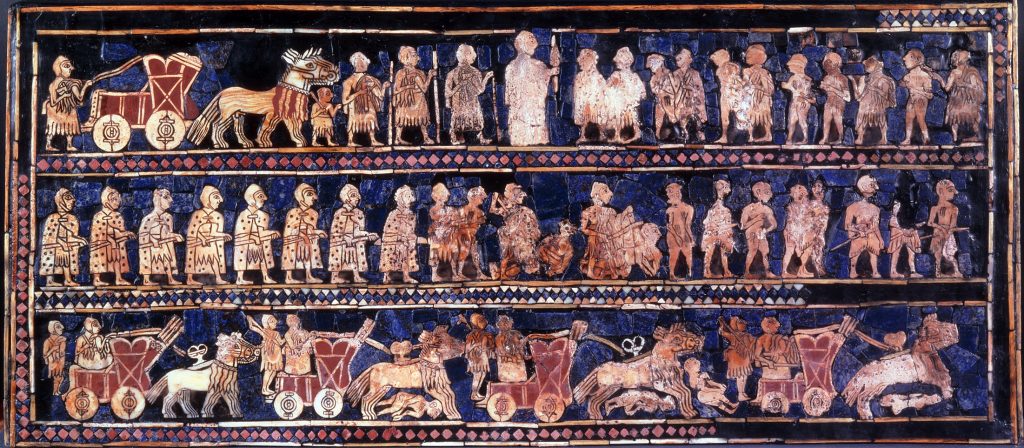
War panel from the Banner of Ur (c. 2600 b.c.e.), preserved in the British Museum, London. Wikimedia.
In this sense, the two great wars of the twentieth century allow us to look deeper into the importance that military conflicts have had for the development of scientific and technological activity. This was evident in the First World War, described by many authors as the war of chemicals, both because of the use of chemical agents such as chlorine, phosgene or mustard gas on the battlefields, and because of the importance of the production of explosives. A war that, for others, should rather be seen as the war of information or the war of engineers, given the important role played by new technologies in the course of the conflict. The development of new weaponry, the introduction of tanks, the use of aircraft, airships and submarines or the role played by telephone, telegraph and radio communications during the conflict are just a few examples. The introduction of all these technological innovations revolutionised the way in which the war by land, sea and air was understood and developed. A new way of waging war in which scientific activity and technological innovation were crucial. In that sense, success in the armed confrontation fell within the domain of a whole series of skills, among which one must include not only the ability to make economic and military decisions, but also to improve technology. Undoubtedly, by matching research programmes with military needs and by demonstrating the usefulness of scientific and technological advances on the battlefield, science and technology, as well as their institutions, acquired substantial recognition and important cultural authority.
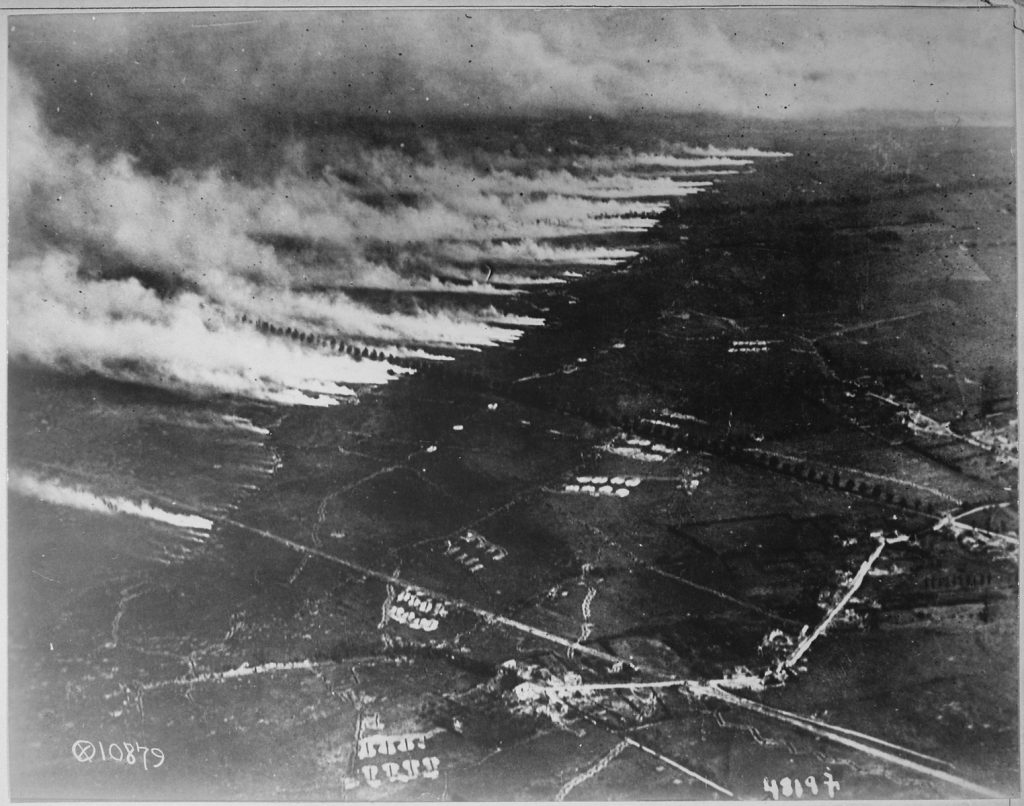
Use of chemical agents by French soldiers on the front line of trenches (1918-1919). Wikimedia.
The Second World War is also especially useful to illustrate what we want to show, since it was crucial for the development of different areas such as space engineering, synthetic materials, electron microscopy, radar, etc. In particular, this conflict was especially decisive for the development of the computer and atomic and nuclear physics. In fact, the conception of the first programmable electronic computers was possible, to a large extent, thanks to the works carried out at Bletchley Park, a British military facility where cryptographers such as Alan Turing (1912-1954) strove to develop methods to decipher messages sent by the Germans using machines such as the well-known Enigma, considered an impregnable machine by Nazi cryptographers. Undoubtedly, Turing played a prominent role in this task of decoding messages, coming to design a machine called Bombe, operational in 1940. The parallel work carried out in Bletchley Park led other authors, such as the mathematician Max Newman (1897-1984), to promote, in 1943, the construction of another machine called Colossus with which to decipher the messages of Lorenz machines, also used by the Nazis to send high-ranking encrypted messages, which were based on Turing’s statistical theory to decode messages. A machine that, although it required the help of a human operator, could also decide for itself according to predetermined instructions. At the end of the war, with the return of scientists and engineers to universities and thanks to the experience acquired in these military facilities by authors such as the mathematician Max Newman or the electrical engineer and expert in radars Frederic Williams (1911-1977), the first operational electronic computers with stored programmes could be developed, as exemplified by the design and construction of the Manchester Automatic Digital Machine (MADAM) in 1948.
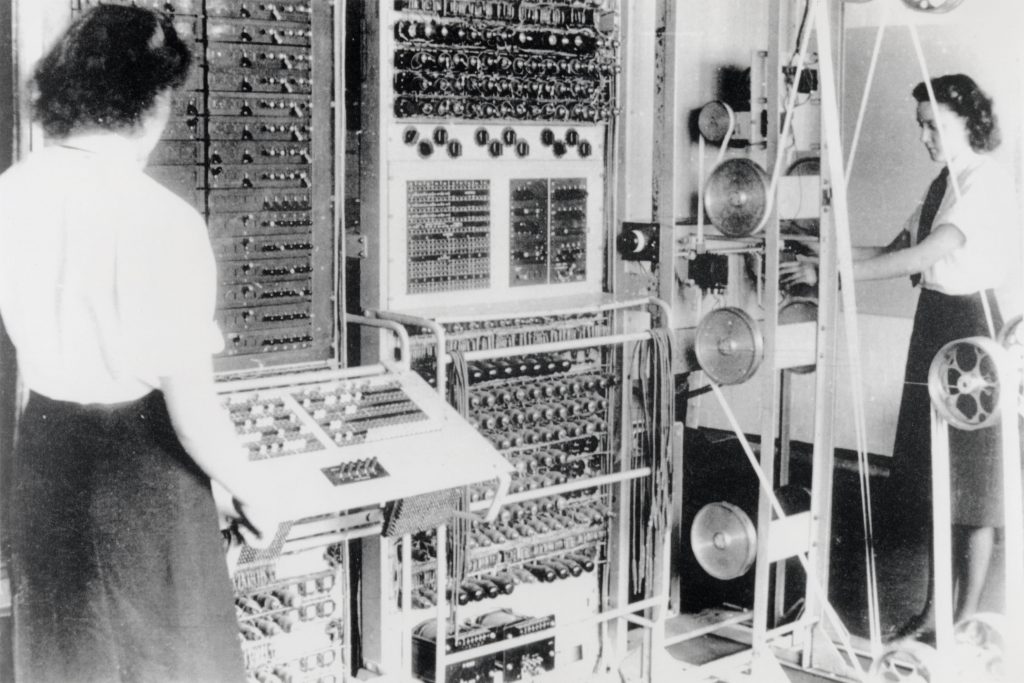
The Colossus Mark 2 computer, used for code-breaking, operated by Dorothy Du Boisson (left) and Elsie Booker (right), ca. 1943. Wikimedia.
The Manhattan Project also shows the great importance that military facilities acquired in the practice of science and technology during the twentieth century. Developed in the United States during the Second World War (with the help of Canada and the United Kingdom) in order to produce an atomic bomb in response to the possible production of German nuclear weapons, the origin of the project dates back to 1942, from the control of nuclear fission reactions of enriched uranium (235U). Under the scientific leadership of the physicist Robert Oppenheimer (1904-1967) and the military command of General Leslie Groves (1896-1970), the success of the project was evident with the nuclear test known as the Trinity Test, carried out on 16 July 1945, a couple of months after the German surrender, signed on 8 May 1945. The test, carried out in a remote area of Alamogordo (New Mexico), was witnessed by several hundred people, including a large group of scientists in charge of collecting and analysing the numerous data with which to assess the effects of the explosion of a plutonium bomb similar to the one that was finally dropped on 9 August 1945 on the Japanese city of Nagasaki (Fat Man), three days after the launch of the uranium bomb on Hiroshima (Little Boy).
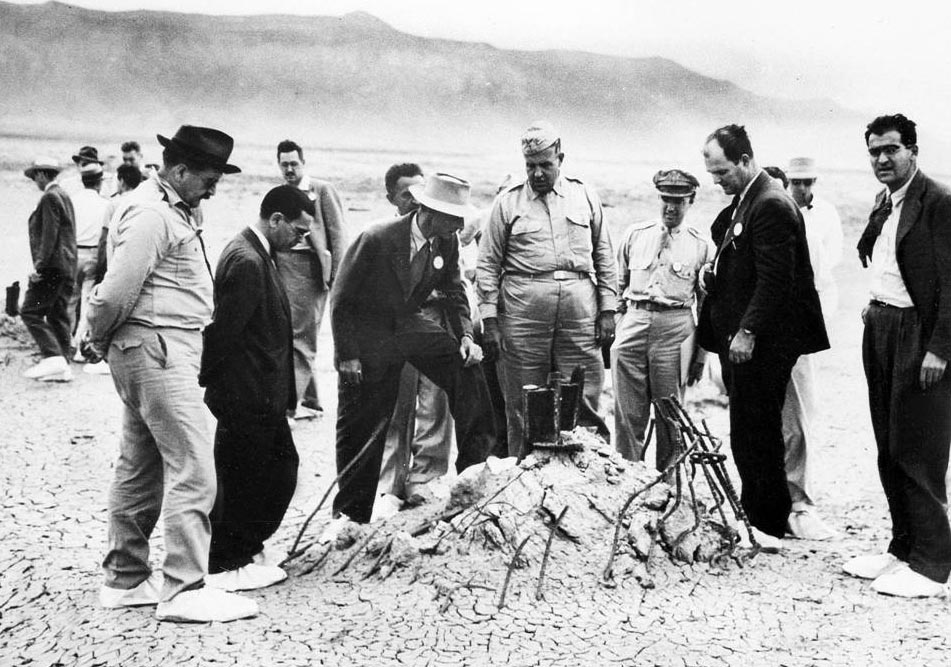
Robert Oppenheimer and Leslie Groves examine, together with several collaborators, ground zero of the Trinity Test (1945). Wikimedia.
Many authors consider that this initiative marked the beginning of a new way of understanding scientific research, opening the door to new interdisciplinary projects of great complexity and great dimensions in which the participation of numerous people from different backgrounds becomes necessary. Not surprisingly, the Manhattan Project was a secret project that involved the mobilisation of a significant part of the community of North American physicists in an engineering project of exceptional importance. In fact, more than half a million people were involved in its development, although few of them, even while working on it, knew the final objective. A number of military facilities, declared areas of total exclusion that could not be accessed without the authorisation of the army, were set up for this purpose, as was the case of the Oak Ridge National Laboratory, located in a secret location in which a city was created with all the services necessary to be able to welcome the scientists and their families, whose lives were subjected to strict control by military commanders. This is similar to what happened at Los Alamos National Laboratory, designed to coordinate the project’s efforts and ultimately design North American nuclear weapons. It was a military complex that eventually became one of the largest research centres in the world.
Pedro Ruiz-Castell
IILP-UV
How to cite this paper:
Ruiz-Castell, Pedro. Military facilities. Sabers en acció, 2021-02-19. https://sabersenaccio.iec.cat/en/military-facilities/.
Find out more
You can find further information with the bibliography and available resources.
Recommended reading
Hodges, Andrew. Alan Turing: The Enigma of Intelligence. London: Unwin; 1989.
Hughes, Jeff. The Manhattan Project: Big Science and the Atom Bomb. New York: Columbia University Press; 2002.
Rhodes, Richard. The making of the atomic bomb. New York: Touchstone Book; 1986.
Roland, Alex. War and Technology: A Very Short Introduction. Oxford: Oxford University Press; 2016.
Studies
Agar, Jon. Turing and the Universal Machine: The Making of the Modern Computer. Duxford: Icon Books; 2001.
Agar, Jon. The Government Machine: A Revolutionary History of the Computer. Cambridge: MIT; 2003.
Forman, Paul. Behind quantum electronics: National security as basis for physical research in the United States, 1940-1960. Historical Studies in the Physical and Biological Sciences. 1987; 18: 149-229.
Herken, Gregg. Brotherhood of the Bomb: The Tangled Lives and Loyalties of Robert Oppenheimer, Ernest Lawrence, and Edward Teller. New York: Henry Holt and Co.; 2002.
Hinsley, F. Harry; Stripp, Alan, eds. The Codebreakers: The Inside Story of Bletchley Park. Oxford: Oxford University Press; 1992.
Pestre, Dominique; Dahan, Amy. Les sciences pour la guerre, 1940-1960. Paris: EHESS; 2004,
Roland, Alex. Science and War. Osiris. 1985; 1: 247-272.
Roland, Alex. Science, Technology, and War. Technology and Culture. 1995; 36: S83-S100.
Ruiz-Castell, Pedro. La Gran Guerra i la recerca científica i tecnológica. Afers. 2015; 82: 647-662.
Sánchez Ron, José Manuel. Ciencia, política y poder: Napoleón, Hitler, Stalin y Eisenhower. Bilbao: Fundación BBVA; 2010.
Schwartz, Rebecca P. The Making of the History of the Atomic Bomb: The Smyth Report and the Historiography of the Manhattan Project. Princeton University; 2008.
Smith, Christopher. The Hidden History of Bletchley Park: A Social and Organisational History, 1939–1945. Palgrave Macmillan: London; 2015.
Websites and other sources
Atomic Heritage Foundation. [Accessed 2017-07-06]. Available here.
Science Museum. Brought to Life: Exploring the History of Medicine – War and Medicine. [Accessed 2017-07-06]. Available here.
The National WWII Museum. The War That Changed Your World: The Science and Technology of WWII. [Accessed 2017-07-06]. Available here.

